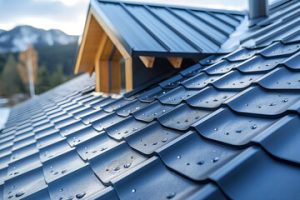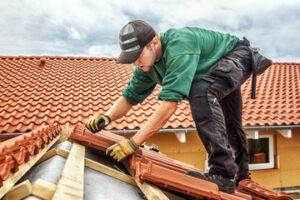Choosing the right professional for your construction project can make all the difference in its success. The right professional will save you money, ensure safety, and help you navigate any regulatory hurdles.

One of the most important considerations when deciding between a contractor and handyman is the size and complexity of your project. Keep reading the article below to learn more about Handyman Construction.
When hiring a handyman, you want to make sure they have the proper insurance coverage for the job. Handymen are exposed to various risks on the job, including property damage and injuries to both themselves and others. Insurance protects you and your contractor from financial losses and allows you to continue business operations while addressing any claims that may arise. Insurance for handymen typically includes general liability insurance, workers’ compensation insurance, commercial auto insurance, and tools and equipment insurance.
General liability insurance offers protection against financial loss arising from bodily injury and property damage to customers or third parties. It also covers legal fees and settlements that may result from a lawsuit. In addition, this type of policy may include business interruption insurance to help cover expenses when your operations are temporarily halted due to an event covered by the policy.
It is also advisable for handymen to carry workers’ compensation insurance in case they are injured on the job. This type of insurance provides wage replacement and medical benefits to workers regardless of who was at fault for the injury.
Professional liability insurance, also known as errors and omissions (E&O) insurance, is crucial for handymen who provide advice or recommendations. This type of coverage helps pay for damages resulting from misrepresentation or negligence and also covers legal costs. This type of coverage is often bundled with other types of insurance to offer a cost-effective comprehensive package.
If a handyman works full-time for an employer, they are likely covered by their employer’s insurance policy. However, if they work on the side as a freelancer or independently, they will need to obtain their own coverage. A handyman who has their own independent insurance is more reputable and trustworthy, as they are demonstrating that they take their own financial responsibility seriously. Having insurance also protects you from contractors who may not have the necessary qualifications or experience to complete your project safely and efficiently. For example, an uninsured handyman may not be familiar with all safety codes and construction practices, which could lead to shoddy workmanship or hazardous situations.
Licensing
Many states require handymen to pass one or more exams. These exams usually test their knowledge of building codes and safety practices. Some states also require them to complete classroom training or on-the-job experience. Others may have other requirements, such as passing a background check or drug screening. The licensing process can take anywhere from a few months to a few years. It’s important to start the application process early so that you have enough time to prepare.
In addition to completing license applications, handymen must also make sure they have the proper equipment and insurance coverage. In some states, contractors are required to carry general liability and worker’s compensation coverage. Others require specialized contractor’s insurance. It is also crucial to maintain accurate records and documentation. Failure to do so can lead to costly penalties or even fines.
Handymen who are licensed are often more trusted than those who aren’t. Licensure also allows them to charge higher rates for their services, which can increase their earning potential. In addition, they have access to industry resources that can enhance their business and help them find new jobs.
Licensed handymen are more likely to follow state regulations, which can protect consumers from shoddy work. They are also more likely to have the necessary skills to tackle a wide variety of projects. This can help them save customers time and money.
Another benefit of becoming a licensed handyman is the ability to hire subcontractors. This allows them to take on larger and more complicated jobs that they might not be able to do alone. However, it’s important to note that this option isn’t available in all states.
Before starting a handyman business, it’s important to choose a name and register it with the state. Then, you’ll need to decide what type of legal entity to operate. Some handymen choose to operate as sole proprietorships, while others opt for a limited liability company (LLC). An LLC can offer more protections and save on taxes. If you’re unsure which structure is right for your business, consult a lawyer or accountant.
Experience
When it comes to hiring a professional for a home improvement project, knowing which type of professional to hire can save you time and money. Choosing the right contractor or handyman for your project depends on the size and complexity of the work, as well as legal requirements in your area. If you’re unsure which type of professional to choose, start by asking for recommendations from friends and family in Bangor, Maine. Then, research a potential professional’s credentials, insurance coverage, and previous experience with similar projects.
The path to becoming a licensed contractor requires extensive work experience and significant investment in professional development. However, successful completion of this process can unlock greater opportunities, higher income potential, and increased professionalism. To make the transition from handyman to licensed contractor, you’ll need to prove your skills by documenting your work history and passing an exam. This will help you build a portfolio that showcases your progress and shows you’re ready to take on more challenging projects.
Contractors are suited to larger, more complex projects, such as kitchen remodels and additions. They can also handle jobs that require specialized skill sets, such as plumbing or electrical work. They’re also able to oversee and manage subcontractors and construction projects. Licensed contractors are required to have liability and workers’ compensation insurance coverage, which protects homeowners in the event of an accident on the job.
Whether you choose a contractor or a handyman, ensure the professional you hire offers a detailed contract that clearly outlines costs and timelines. Also, be sure to review their online reviews and references, as this can help you gauge their professionalism and reliability. By making an informed decision, you can ensure your project is completed on time and within budget. By learning the differences between a contractor and a handyman, you can better align your project needs with the right professional in Bangor, Maine. For minor repairs and maintenance, a handyman may be the best choice. However, for major renovations and structural changes, a licensed general contractor is necessary to avoid costly mistakes.
Reviews
Many handymen provide a range of services and are often more cost-effective than a general contractor. However, if your project requires structural changes or specialized skills, it may be worth hiring a general contractor to manage the complexities and ensure compliance with building codes. It’s important to receive estimates from multiple professionals before making a decision. Handymen can typically provide a quick estimate, while general contractors will need to review plans and calculate the comprehensive costs of a project.
People hire handymen for smaller scale renos and maintenance work. It is cheaper and easier for home owners to call one guy who can do drywall, painting, tilling and trim than calling several different tradesmen. But anyone can call themselves a handyman and there are good ones and bad ones.





